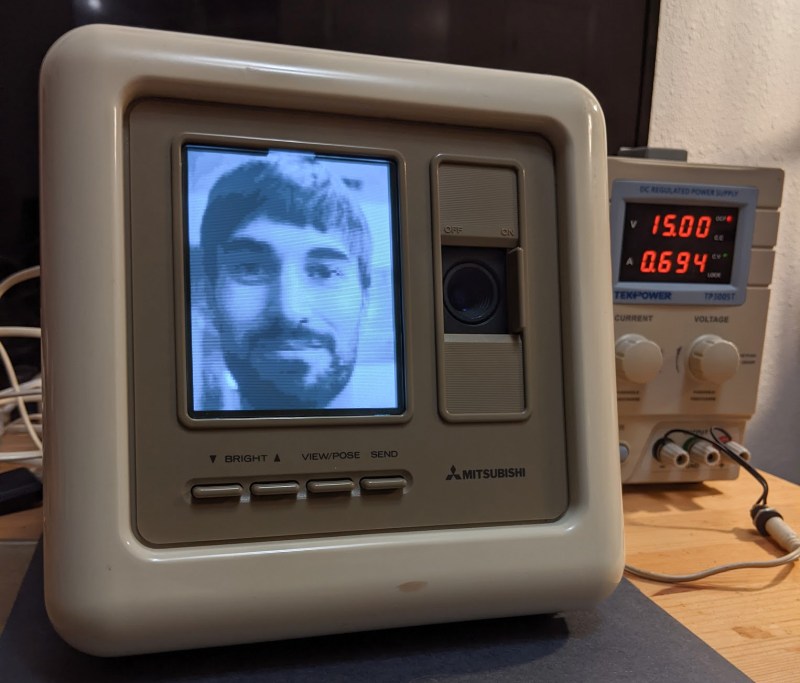Hang up your car phone and toss that fax machine in the garbage. Even back in the late 80s it was possible to do away with these primitive technologies in favor of video conferencing, even though this technology didn’t catch on en masse until recently. In fact, Mitsubishi released a piece of video conferencing equipment called the VisiTel that can be put to use today, provided you can do a bit of work to get it to play along nicely with modern technology.
[Alex] was lucky enough to have one of these on hand, as soon as it was powered up he was able to get to work deciphering the messaging protocol of the device. To do this he showed the camera certain pictures with known properties and measured the output waveforms coming from the device, which were AM modulated over an RJ9 connection which he had changed to a 3.5 mm headphone jack.
It communicates in a series of pictures instead of sending an actual video signal, so [Alex] had a lot of work to do to properly encode and decode the stream. He goes into incredible detail on his project page about this process and is worth a read for anyone interested in signal processing. Ultimately, [Alex] was able to patch this classic piece of technology into a Zoom call and the picture quality is excellent when viewed through the lens of $399 80s technology.
We have been seeing a lot of other hacks around video conferencing in the past six months as well, such as physical mute buttons and a mirror that improves eye contact through the webcam.
















I love the detail of the on/off switch which, also, covers the camera.
What is old is new again! That’s a nice detail I hadn’t noticed.
Very clever. Sort of like slow-scan TV in that it sends snapshots instead of continuous video.
I just read a message thread on an old phones forum about a woman who was cleaning out her parents’ house. Her dad had worked for the phone company and she found a complete prototype Picturephone, which she eventually auctioned off.
Nice. For another project it’ll be fun to have your Zoom image be a robot with your voice represented by Lissajous curves (like the Mac showed) in the robots mouth.
Interesting suggestion, now I’m off to look for projects that feed animations as V4L camera devices.
I’ve been using the v4l2loopback kernel module for the past many months to add pillarboxing to my webcam’s 4:3 video output so that stupid chat clients don’t crop off my chin and forehead when they try to crop my video to 16:9.
So that’s an obvious place to start…
Oops, I see now that v4l2loopback was literally mentioned in the linked article.
Too bad this camera is only 0.2fps.
Anyway, ffmpeg can write to a v4l2loopback device, so you can hook up some audio visualization accordingly.
In regard to the Title Photo:
“Oh! Hello Dr. Quest! It has been a while! What a pleasure it is to see you again! How are Jonny and Hadji doing?”
Meanwhile, I can’t even get my Dell Venue 11 Pro 7139 – built circa 2015 – to run Zoom. FML! 🤬